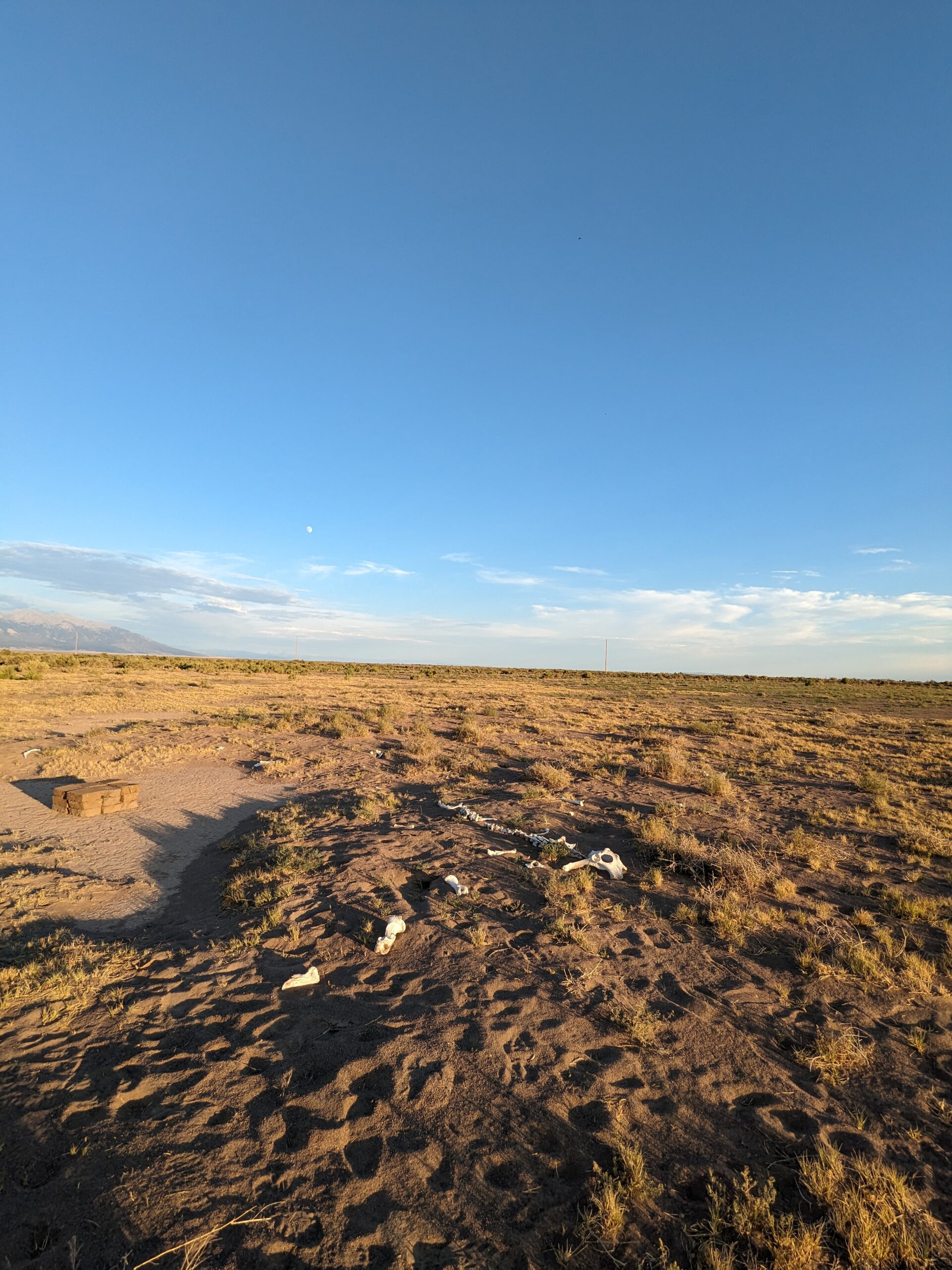
The meek, reverent sculptures of Marguerite Humeau’s Land Art puncture 160 acres of unusable potato farmland in Hooper, Colorado.

Read my review for Southwest Contemporary about the White Cube Contemporary Art Gallery artist’s land art, curated by Black Cube Nomadic Museum, on view in the San Luis Valley for the next two years. For more information about the piece, find Orison’s website here.

Here’s an excerpt:
Competing with a backdrop of the Collegiate Peaks—a range of grandiose mountains each breaching 14,000 feet—and the bright, amorphous slopes of the Great Sand Dunes, Humeau’s numerous but camouflaged flora-and-fauna-inspired sculptures grovel before this macroscopic drama. Fortuitously arriving at golden hour, many of us remained distracted by the natural landscape, snapping pictures of ourselves in the pre-gloaming light, the dust storms on the horizon, and the play of our shadows stretching over scorched earth. Meanwhile, Humeau’s visual renditions of “prayers,” the definition of orisons, waited for reverence.
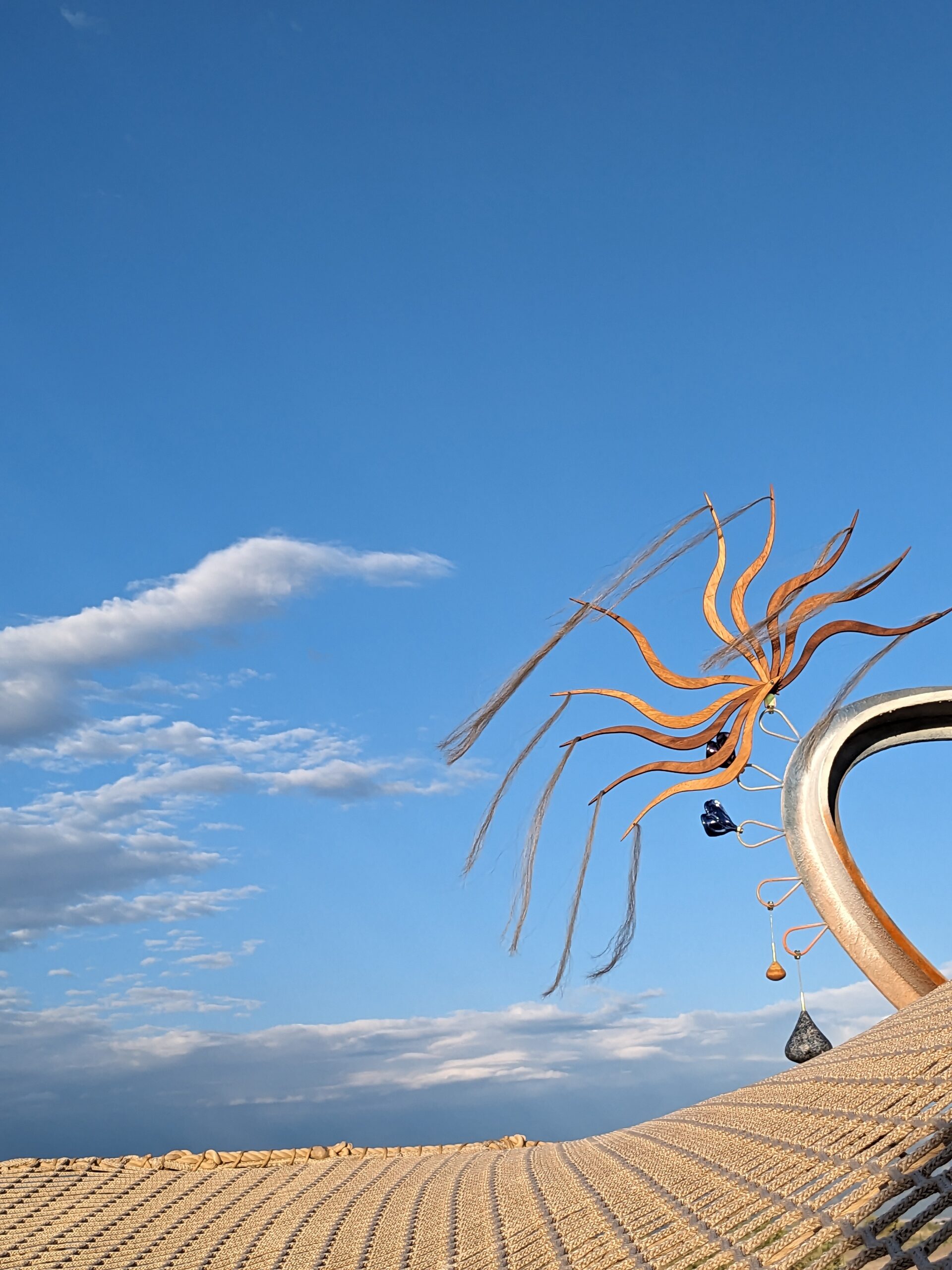
While whimsical Americana characterizes the arguable Land Art of the UFO Watchtower, Humeau’s big, sundry thoughts make her work more difficult to specify, and subvert the impact of her small, poetic orisons. Despite Humeau’s extensive research and sensitivity, some melancholic lack haunts Humeau’s engagement with these 160 acres. Perhaps I wanted a more compelling motivation behind European Humeau’s “health report” (to use her phrasing) on a piece of indubitably struggling United States farmland undergoing unavoidable megadrought and the unprecedented effects of global climate change.
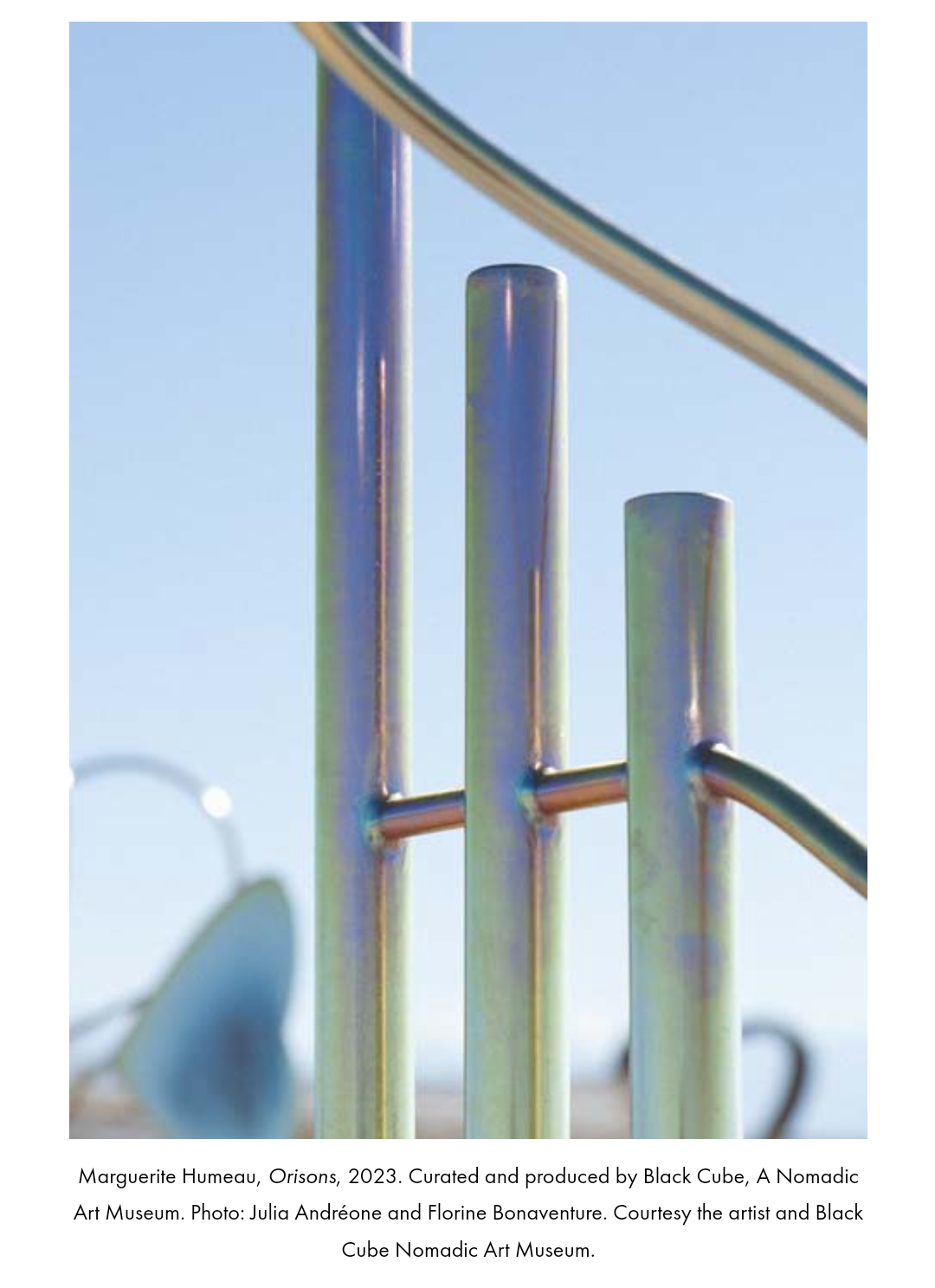
As I beheld thirty-six spinning Spurge Dancer sculptures (numerically reflecting the artist’s age) on a patch labeled “150-year-old Sadness” on the Orisons map, I contemplated Humeau’s drive to offer such unavailing amelioration. I further pondered if I unjustly judged Humeau’s impulses to study, classify, map out, sanctify, and remedy a piece of land as too dangerously adjacent to ongoing and harmful settler-colonialist mentalities and epistemologies.
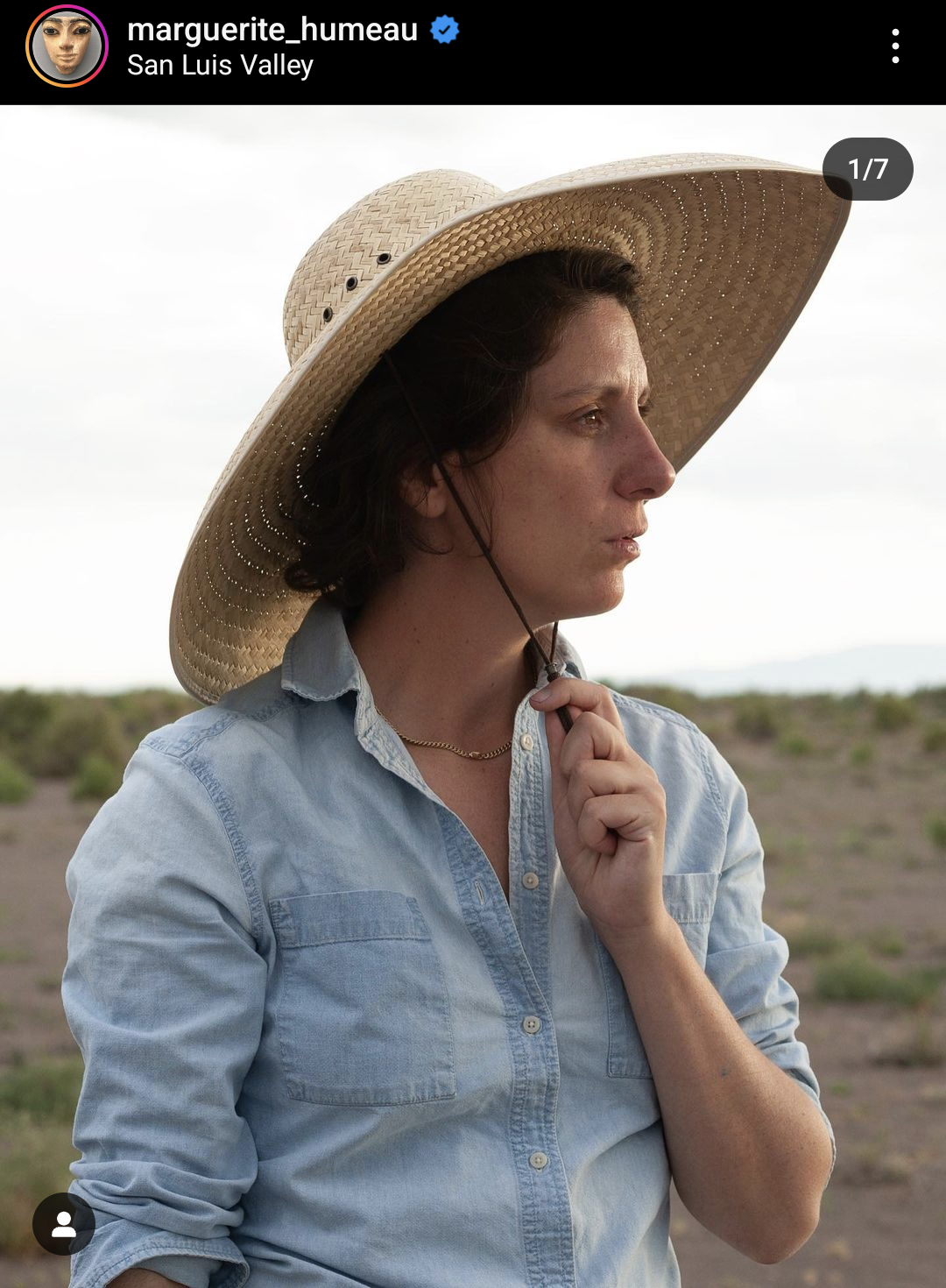
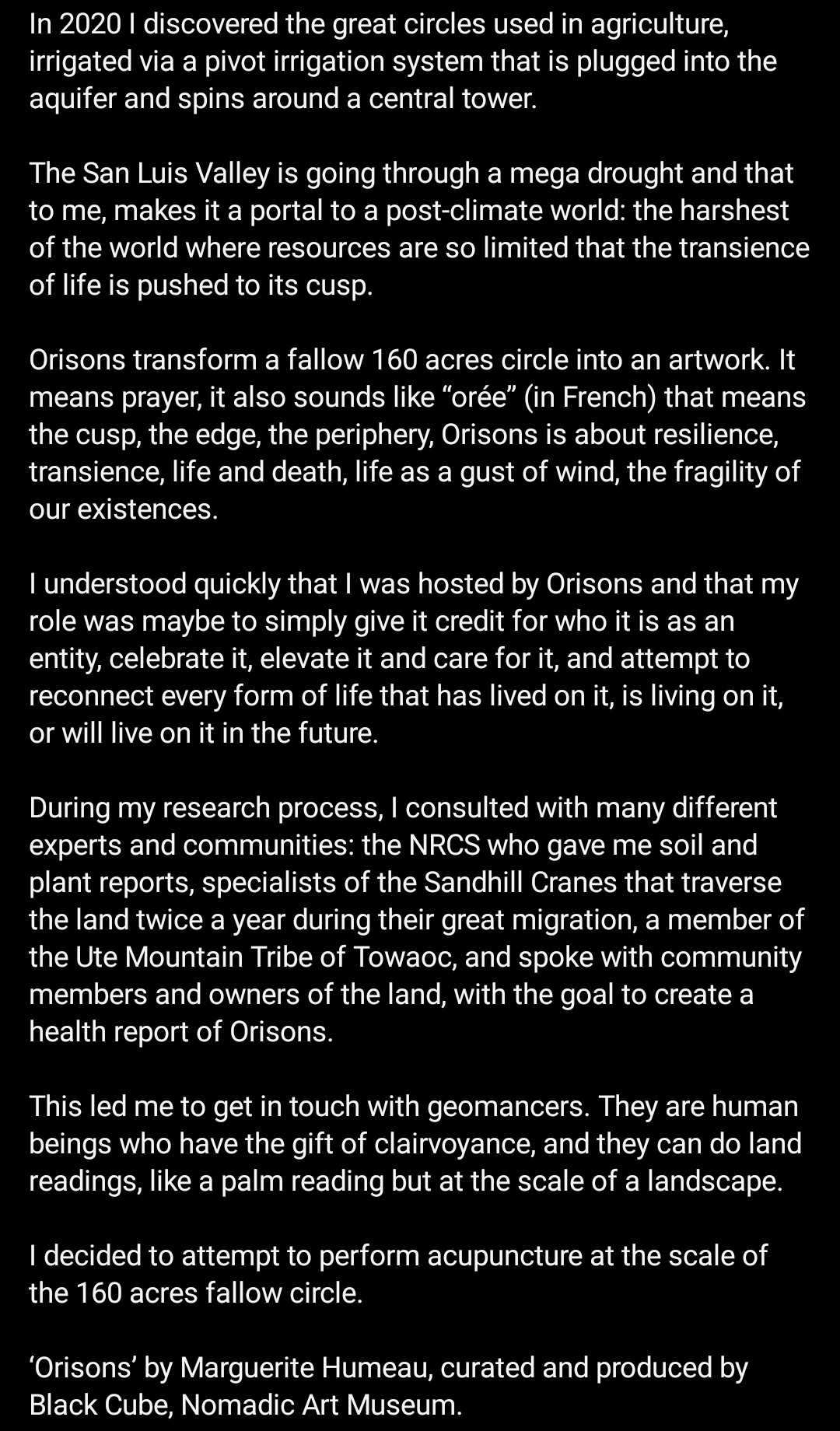
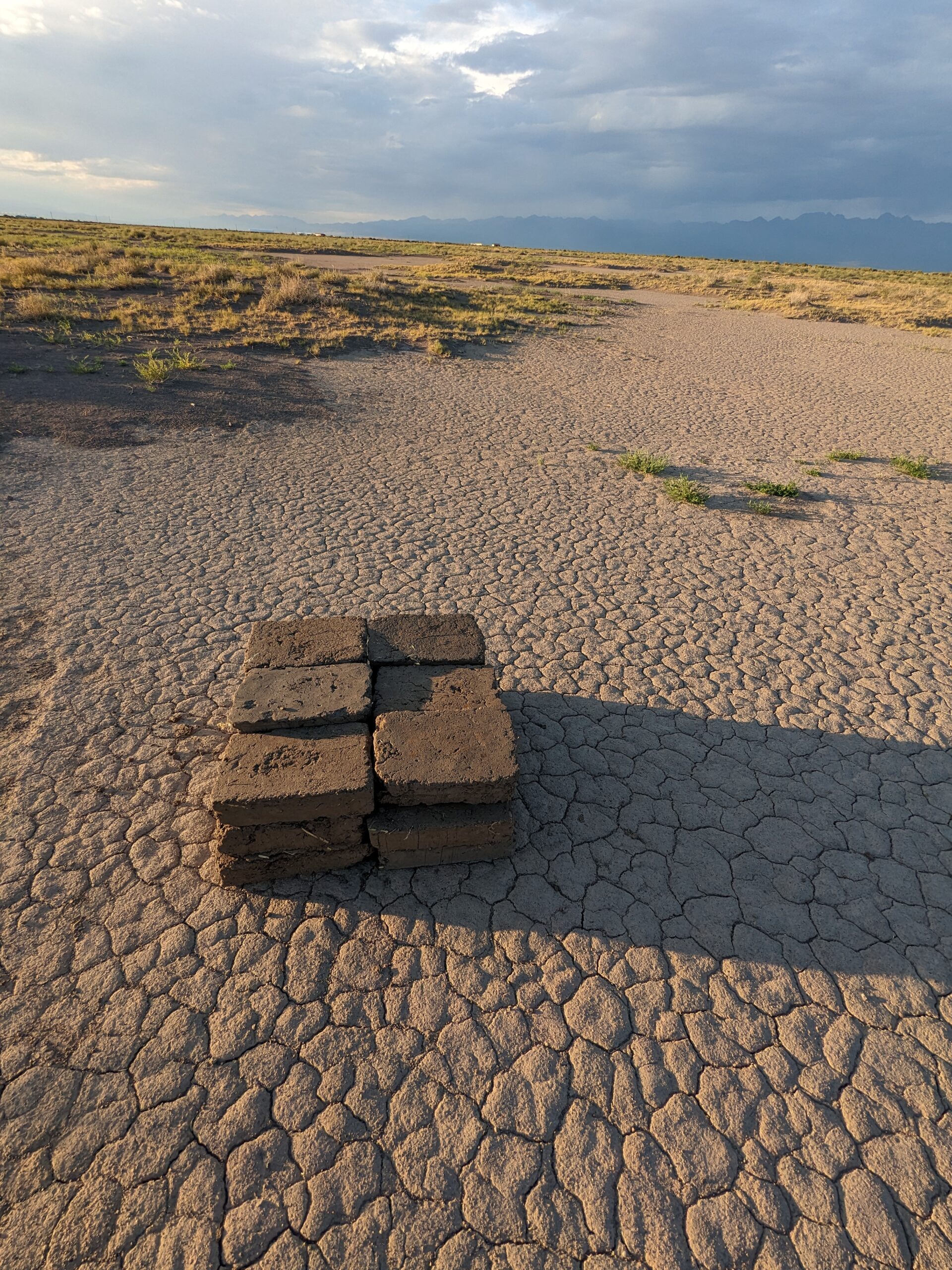
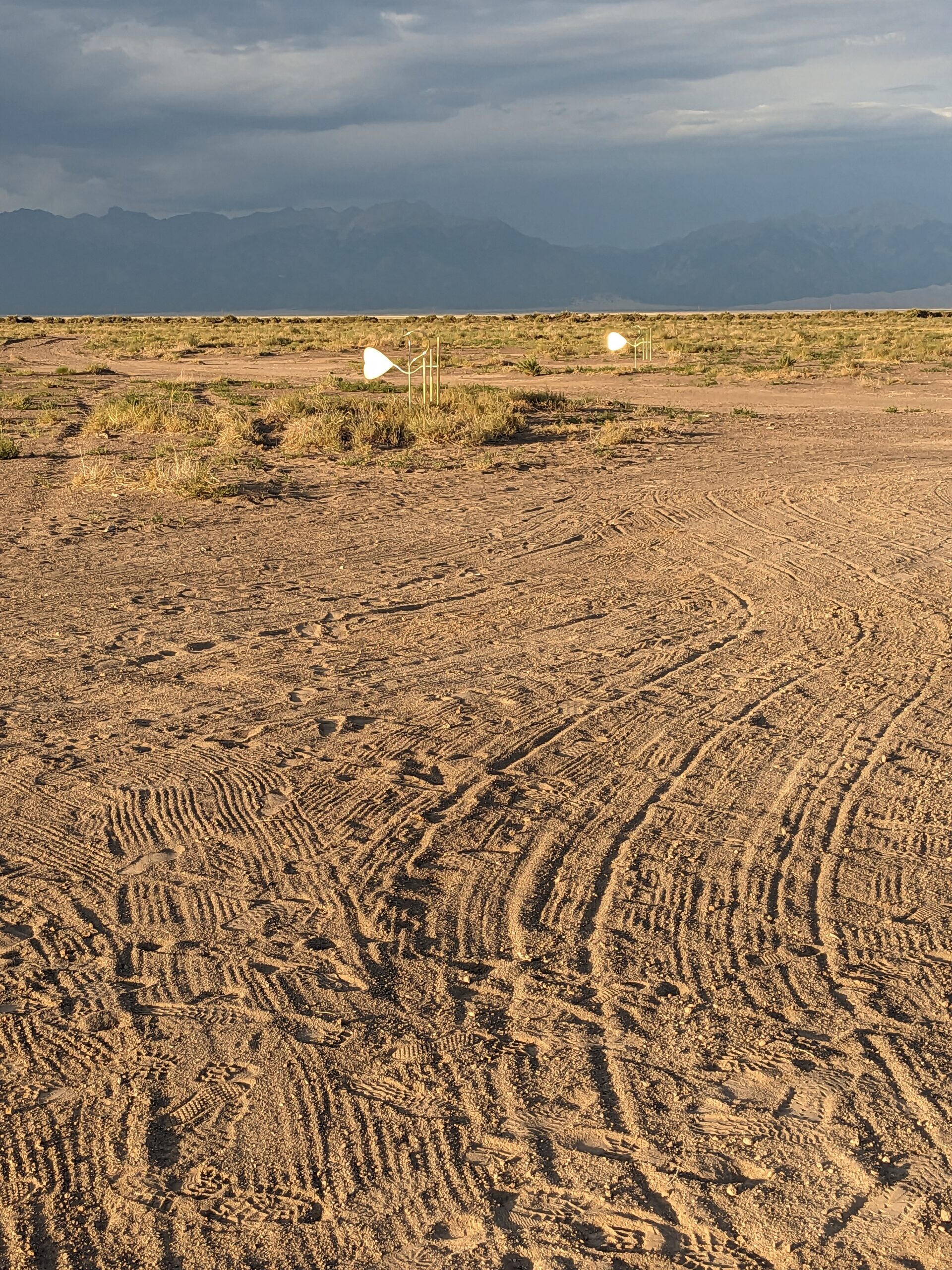
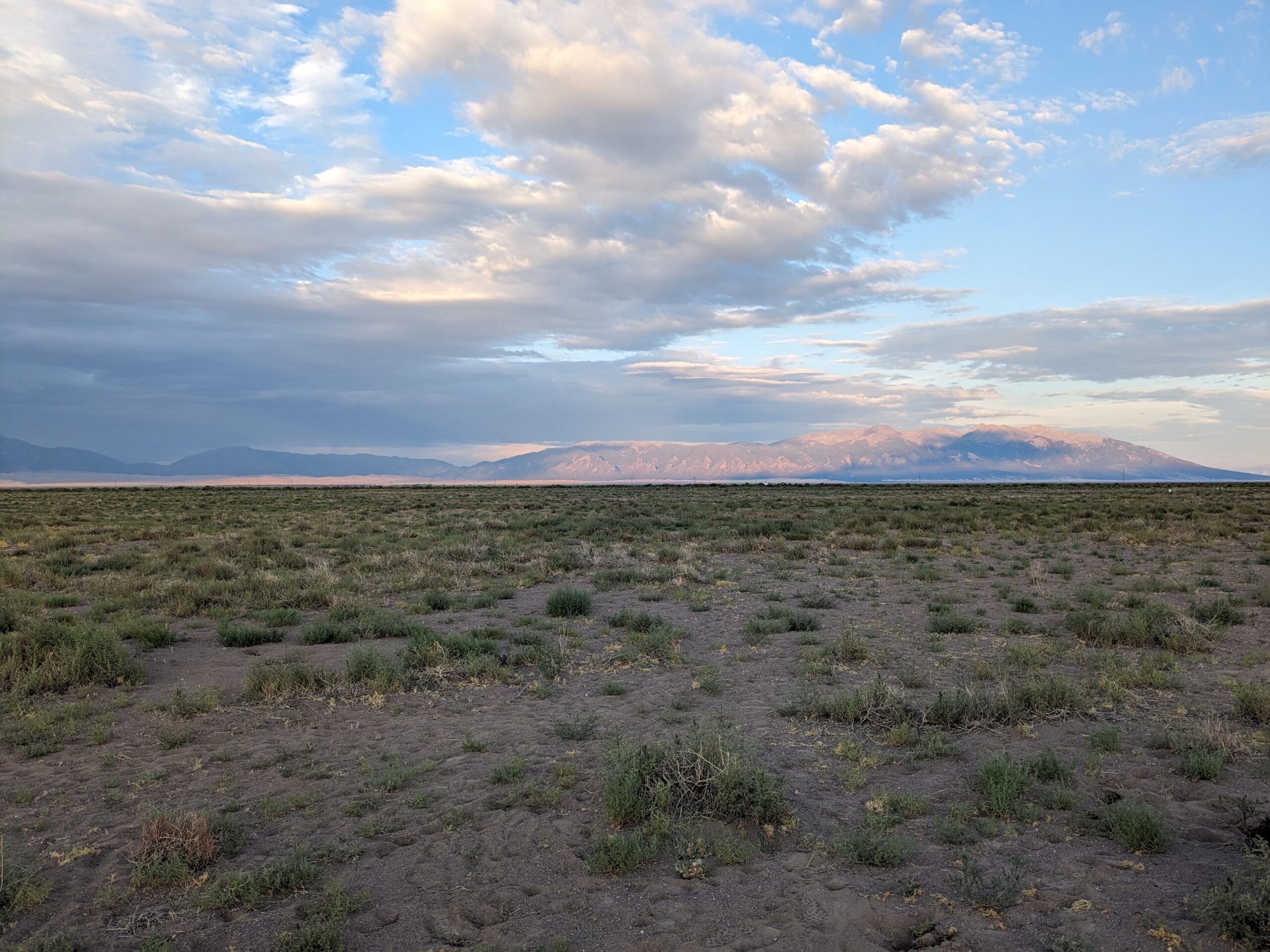
Find a full list of my publications here.
Leave a Reply